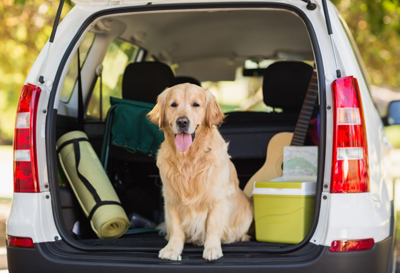What Dog Owners Should Know for Safe Traveling

When pet owners travel with their dogs, researchers say these owners are usually sure they know what is best for their furry friends in terms of comfort and safety. Researchers found that two out of three pet owners did not know the safest places for their dogs to stay while traveling in a vehicle. About 60 percent of the respondents said they were not sure how often they should stop to give their dogs a break from traveling. Experts say that while it is understandable that people want to bring their dogs on trips, they need to make sure they understand what is best for them to ensure their safety and comfort.
More than 65 percent of the dog owners who were interviewed said they bring their dogs on the road for short trips such as running errands or long trips such as family vacations. The survey showed that about 85 percent of the people surveyed were responsible enough to know that their dogs should be secured while in the vehicle. More than 65 percent said they knew how to use a seat belt to keep their dogs properly secured. Experts recommend the following tips for preparing to travel with a dog.
Secure The Dog
Crates are the safest places for dogs while they are traveling. If there is an accident, a dog that is not secured will become a projectile. In addition to injuring itself, the dog can also hurt others in the vehicle. Crates should be secured in the rear or middle of the vehicle. Harnesses or carriers that attach to seat belts are safe options, and these can be purchased at pet stores in a variety of sizes. Dogs should never be put in the back of a truck and left to ride loose.
Take Breaks
Dogs need to take breaks to relieve themselves during long road trips, and they need to do so more often than humans. Stopping every three hours for about 30 minutes is an ideal plan to give a dog time to walk, stretch and do its business.
Keep Windows Closed
Many people let their dogs stick their heads out the window, and dogs enjoy this very much. However, there are rocks and debris on the roads that can be thrown as the tires move over them. These can injure a dog's eyes and ears. It is also important to remember never to leave a dog in the car on a hot or warm day. Even if the temperature outside may feel just warm, the inside of a car can be much hotter. Dogs can suffer heat stroke or die even if the windows are open on a hot day.
Accidents may not always be avoidable. If an accident occurs, it is important to be prepared by taking these steps.
Cards And Labels
Always keep an emergency card with personal information. For dogs traveling in crates, put labels on the crate with contact and medical information.
Dog Coverage
Check insurance to see if a dog is covered in the event of an accident. It is also helpful to know if insurance will cover dog assistance if injuries will make it impossible for the owner to care for the dog.
Pet Identification
It is important to have a collar tag and microchip put in the dog. If the dog is taken to a shelter or gets loose and runs away during an accident, this will help ensure the animal is returned to its owners. Collar tags should have updated phone numbers. Some pet owners choose to enroll their dogs in 24-hour recovery services, and the service's number should be placed on the tag if this is the case.
